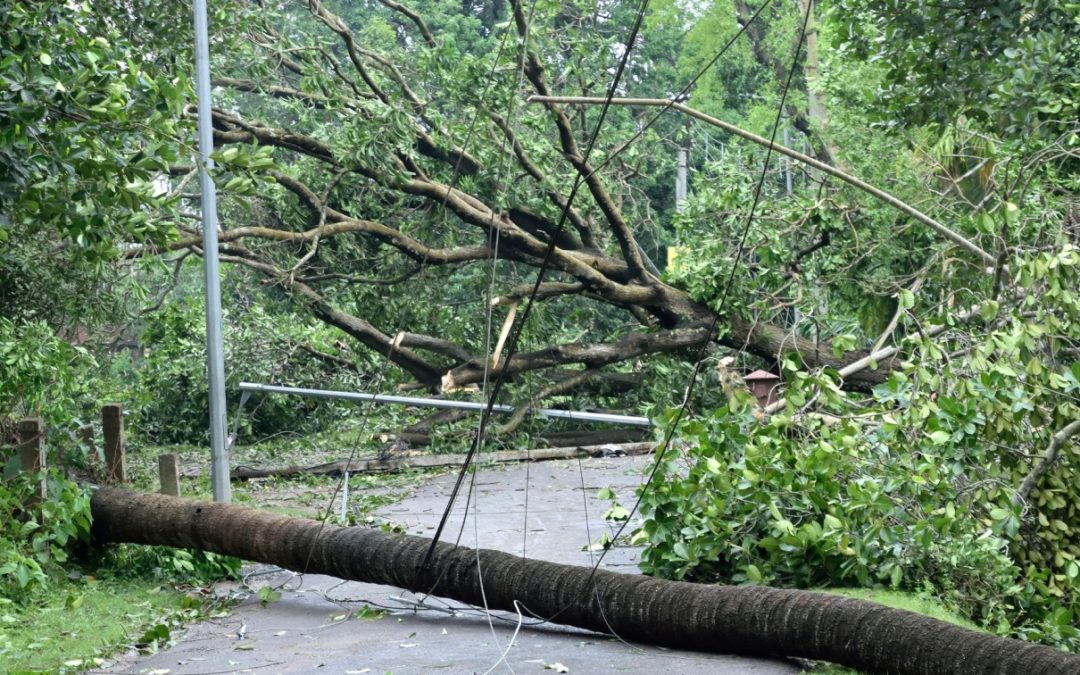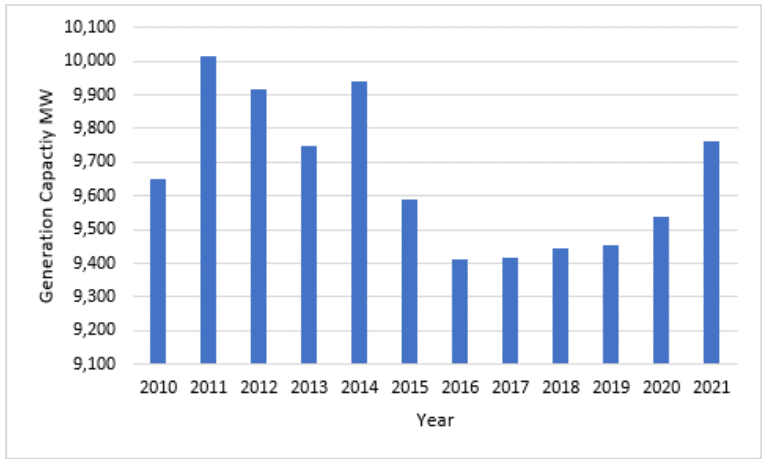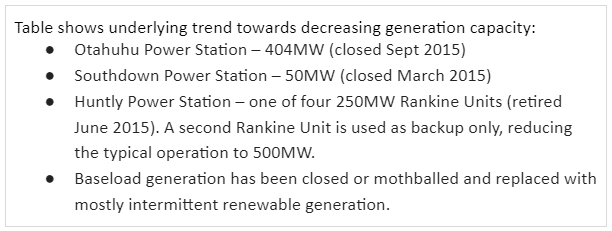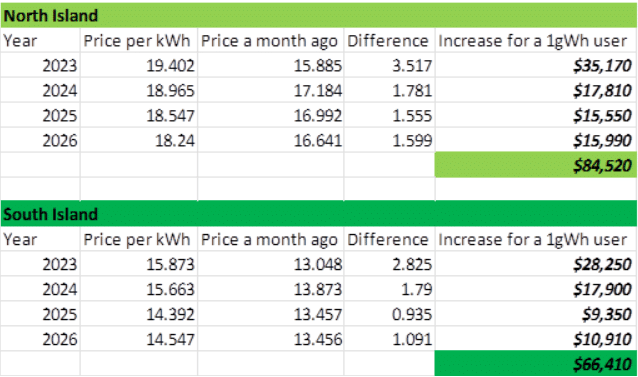
by David Spratt | Apr 5, 2023 | Energy, News
As renters and homeowners in the 1970s and 80s we were accustomed to hot water cylinder ‘ripple control’ – the mechanism whereby power companies assured us of a cold shower when we got home from work.
The trade-off was that households were able to operate stoves, lights and televisions without power cuts. Then along came the Clyde Dam and all this went away.
Until now.
If we take all our light vehicles off the road and replace them with EVs, this would increase our electricity demand by 20% (EECA Nov 2022). Add to this new ‘green’ data centres built by Google, Microsoft, AWS and our own IT companies, and this will likely add a further 10% to our current electricity needs. Our already stretched electricity supply infrastructure simply won’t cope.

The Energy Trilemma is defined as the need to find balance between energy reliability, affordability, and sustainability and its impact on everyday lives.
Understanding the challenges to balancing these three core elements is vital to keeping the lights on, the economy operating and achieving goals such as Net Zero carbon emissions.
Energy Reliability
The energy system aimed at ensuring reliability in New Zealand is made up of three interconnected parts:
Generation which comes mainly from the dams in South Island Lakes.
Transmission – Transpower’s multibillion dollar electricity supply backbone, built mainly in the 1950s and 1980s on 30,000 properties, with 25,000 transmission towers supporting 11,000 kms of lines and their essential 170 substations.
Distribution – Delivering electricity to homes and businesses via 27 regional Lines Companies, most of whom are locally owned. These companies own the power poles, lines and transformers that bring electricity to our door.
These three elements are highly regulated and involve investments in assets worth billions of dollars.
Our whole energy system is funded by debt that must be paid for by current and future generations.
Who pays and when is the big issue here. Is it today’s user, their children or their children’s children?
This is called intergenerational debt servicing and presents huge challenges when deciding the fairest way to distribute the cost of assets that in some instances might have a useful life of fifty years or more – or in the case of dams much longer than that.
To make things worse, an emerging issue with these investments is the risk of what is known as ‘stranded assets.’ This happens when transformational technologies such as solar and wind based distributed energy systems makes further investment in centralised dams, transmission and distribution uneconomic. When this happens the debt remains but the ability to pay by leveraging (charging for) existing or new assets is reduced or disappears completely.
Affordability and Equity
The New Zealand economy is reliant on agriculture which in turn is reliant on energy. However, economic theory suggests that on a ‘user pays’ basis, a farmer in a remote location should pay more than an apartment dweller in a big city or town. After all it is, at first glance, far cheaper to provide an urban dweller power than it is to run kilometres of copper wire to a small number of farms down a rural highway.
Recent changes to the way costs are allocated for Transpower’s transmission backbone came up with the proposition that the further you are from the source of the power (the lakes) the more you pay because you accrue greater benefit.
This means that a dairy farmer in Northland pays much, much more for connection to the grid than a Southland farmer producing the same products with the same amount of electricity. It conveniently ignores the fact that three quarters of the population of New Zealand is in the North Island and therefore paid for at least this proportion of the massive costs of building our generation and transmission infrastructure in the first place.
Taking this economic puffery to its logical extreme we should be seeing city lines companies like Vector punishing those who are not living in the inner city by charging more for connections to their homes. Thank heavens for the Elected Trustee model that makes this kind of logic totally politically untenable.
While the Trust model provides a level of protection from purist economists, unelected energy officials aren’t as susceptible to the wrath of the voters.
Our government market regulator, the Commerce Commission, doesn’t even have an affordability or equity objective when addressing the electricity market. Instead, it’s ‘Right investments, Right Time at the right cost.’
What about doing ‘right’ by the rural communities generating enough food for 40 million people globally and generating exports in excess of $72 billion annually?
Sustainability
Electricity generated by gas fields, coal and oil fired power stations is expensive, carbon emitting and directly impacts the wholesale market price of electricity.
Over the past decade or so we have seen a steady decrease in their contribution to the country’s generation capacity as generators have switched off coal and gas fired capacity. A government ban on further oil and gas exploration and the rapid decline in our existing gas resources in and around Taranaki has placed even more pressure on our electricity supply.
The net result, as demand threatens to exceed supply, is that wholesale and forward prices are at record levels now and well into the future.
One answer to this supply issue might be Lake Onslow – pumped hydro – essentially a $17 billion, ten year project to deliver a giant hydro powered battery designed to help protect against hydro shortages.
Adding 1200 megawatts capacity (roughly an eighth of the country’s current peak capacity) would potentially help bring the volatile wholesale market for electricity back to some semblance of normality.
The Government has just made a decision to complete a $70 million business case on Lake Onslow. Add to that the $30 million they have already spent and it looks like this decision will be a major electricity industry inflexion point.
It’s difficult to see the GenTailers detaching themselves from the status quo and its associated super profits. As such it has been no surprise at all to see them aggressively highlight research from reports that paint the Onslow Project as an expensive and impractical idea.
What I have failed to see is any practical alternative being offered – other than the monopolists’ favourite – punishing vulnerable consumers into changing their behaviour by raising prices at peak time. This is not a great option when young consumers are juggling hungry children, bath times, winter heating bills and brutal mortgage interest rates, and dairy farmers have cattle lined up outside the sheds for milking.
Barring the embedded carbon costs of construction materials like steel and concrete, Onslow offers a sustainable opportunity to enhance the viability of inconsistent generation sources such as solar, wind and tidal generation. By providing a massive hydro based battery to store load as and when it is created, we could see wholesale prices back in the 8-12 cents per kw.
This would see the benefits of lower input costs flowing to farms, businesses and households instead of into the pockets of the gentailers and governments eager to feed off the dividends their super profits are providing.
- Part three of this series will address that most controversial of subjects – Water, Waste and Stormwater. Call it Three Waters if you like. I call it a right mess.

by Chris Hargreaves | Apr 5, 2023 | News, Panoramic Power
Ever had sky high utility bills at your investment or commercial property that you can’t explain? Or are you looking for an energy solution that provides an accurate breakdown of tenant consumption so that you can bill by usage rather than square metre?
Meet Panoramic Power!
It’s predictable, reliable, never sweeps costs under the carpet and hates waste. It’s always fair, makes everyone pay their way and works on facts rather than assumptions.
Total Utilities has been leveraging its power as part of its Total Tenant Metering Solution – to break down utility billing for clients to a granular level. It enables us to pinpoint any potential cost savings and sustainability gains through efficient power use, as well as detect any power faults or maintenance issues that could be costing you dearly in your common areas.
Panoramic Power, combined with our knowledge and expertise in analysing data, gives you the ability to manage your energy consumption right down to device level across your entire property.
It also enables you to avoid the inconvenience of regular visits from the meter reader! Whether you’re a landlord, property manager or tenant, this could be the perfect billing solution! Read on to get to know Panoramic Power better…
Panoramic Power
Occupation: Energy Insights tool – working as part of Total Utilities’ Tenant Metering Solution.
Relationships: In an exclusive relationship with Total Utilities as part of Centrica’s ‘Energy Insights’ package.
About Panoramic Power: A wireless sensor technology that transmits data from all your energy-using equipment and devices in real-time to a cloud-based analytics platform called PowerRadar. It can be used as part of Total Utilities’ tenant metering solution to give full visibility into your energy usage.
Designed for simple, quick, non-intrusive installation with minimal business disruption. Requires no maintenance and is a revolution in energy management.
Can provide detailed insights into how, why and where energy is being used within your property or common areas and where it’s being wasted.
Collects detailed utility usage information, enabling Total Utilities to analyse its data and help landlords bill tenants fairly based on individual consumption.
Not only enables property owners to charge residents fairly and accurately for the amount of energy consumed during a billing period, but also provides important feedback on energy consumption to encourage behavioural change.
Promotes energy conservation and savings.
Best qualities:
- Gifted in accurately measuring and collecting data.
- Great with numbers.
- Passion for measuring and conserving energy for a cleaner, greener planet.
- Extremely low maintenance.
- Always provides useful insights in real time.
- Hates inefficiencies and energy wastage.
- Enables landlords, property managers and tenants to save energy and money.
Bad habits: None. Excellent credit history. Likes to keep things clean and green.
Ready to meet?: If Panoramic Power sounds like your type of Energy Insights tool, contact Total Utilities and we can hook you up with our Total Tenant Metering Solution.
Keen to find out more before committing?: Panoramic Power and Centrica Energy Insights come with their own Total Utilities Centre of Energy Excellence Brochure. (Click here)

by Chris Hargreaves | Feb 28, 2023 | News, Waste

by David Spratt | Feb 23, 2023 | News, Planet Spratt
We have all watched with varying degrees of horror and sadness as first Auckland and then, a week later, the entire North Island suffered from catastrophic weather events and their aftermaths.
I can’t help but think we were warned about this over two decades ago and that these events are a shocking example of climate change writ large, with more to come.
‘Climate change, and specifically global warming, is not new. Swedish scientist Svante Arrhenius posited that burning fossil fuels would add carbon dioxide to the atmosphere resulting in a ‘greenhouse effect’ (anthropogenic climate change) in an essay in 1896. ‘Global warming’ came into the public domain in a paper by Wallace Broecker published in the magazine Science in 1975. Source – John Walton Feb 18 2023
Critical infrastructure left wanting
My strategic hat tells me that this is a crisis for individuals and businesses that will rewrite the way we consider the basics such as reliability of power, water, food, sewerage systems, stormwater and fuel supplies.
The impact on communications is also significant. Our mobile phone and data networks rely on power to stay up. Battery backups are designed to maintain mobile transmission towers for a few hours until a service crew can arrive – not to keep systems up for days if not weeks without power.
This starts with our national grid and the local lines distribution network that delivers power directly to our homes and businesses. All these need to be designed and upgraded for greater resilience and higher availability. The issue here is that this costs a lot of money, time and resources.
For example, imagine that you are a lines company operator in a flood or storm damaged area like Hawke’s Bay or Northland. Your regional population is, say, thirty thousand people and you are faced with a bill of $100 million dollars to restore, repair and then bring your power systems up to the regulated standards of reliability and availability.
The cost to do this is $3,333 per head of population or roughly $10,000 per household.
Next, you are a water company in the same region whose filtration, pump and pipe infrastructure is also in poor shape. Water infrastructure funding is not my bulwark but it’s fair to say that $50 million would go some way to solving the problem in this example.
That’s another $1,666 per head or roughly $5,000 per household.
Crisis will rewrite the future
The problem will only get worse over time if the climate scientists and weather forecasters are to be believed. Just fixing the damage today might not solve the problem tomorrow.
Any city or town in New Zealand could find themselves staring down the barrel of rates increases, electricity lines charge increases and in many cases increases in water rates at a time where employment and economic growth are by no means guaranteed.
In the meantime the power goes out, the drains leak and our drinking water quality is questionable, while all the time our elected politicians local and central fiddle while Rome drowns.
Cyclone Gabriel is conservatively estimated to have cost the country $13 billion in repair costs alone.
If, as I believe, we can expect more and worsening climate destruction, we will have to build in some resilience to our infrastructure networks – and fast.
*Part two of this series addresses the after effects of Cyclone Gabrielle and will look at the options for more available and reliable power for businesses and the rural economy.
Sign up below for Total Utilities Market Commentary to receive all the latest market news and insights.

by Chris Hargreaves | Jan 24, 2023 | Energy, News
Shop around early for new energy contracts is our advice to customers seeking to avoid the risk of skyrocketing energy prices this winter.
Our warning comes hot on the heels of Transpower cautioning that the Electricity Authority’s recommended measures to ensure the security of electricity supply for this coming winter are insufficient, and that urgent action is now needed to prepare for winter demand.
The Gas Industry Company is also ringing the alarm bells saying, “To avoid the situation where some customers are coming to market at times of tightness across the energy sector, we advise industrial and commercial gas customers with upcoming contract renewal to ‘go to market’ for supply well in advance of the contract expiring. It is our view that going to market early will reduce the exposure risk associated with low hydro inflows impacting on gas supply in Q2, 2023.”
Decreasing generation, rising prices
So how and why has this situation arisen? Well, it’s been a long time in the making with NZ’s operational generation capacity reducing since 2010, as thermal base load generators have closed and not been replaced.
New generation that has come on stream since 2010 is mostly intermittent wind generation that is reliant upon the caprice of mother nature. Consider the fact that on an annual basis, NZ wind farms generate at an average of 40% capacity – meaning replacing baseload thermal capacity with like for like wind capacity results in an average 60% shortfall.


The early bird catches the worm…
With all indications pointing towards winter shortage and increasing price volatility, we encourage our clients to review the market well in advance of energy contracts expiring. This allows time to shop around and find the very best deals for your business while you still have some room to manoeuvre.
Leaving it to the last minute will likely leave your business exposed to the vagaries of the winter market and the possibility of surging prices. You could be forced to accept increasingly unfavourable energy contracts that end up costing your business dearly.
The below tables show how prices have surged over just the last month:

Light at the end of the tunnel?
While the current picture of the energy market seems fairly bleak, there is perhaps some room for optimism with signs pointing to new generation in the pipeline – albeit slowly.
News from Transpower is that NZ could bring on more than 7230 megawatts of new grid-connected generation capacity if the top 51 projects in its new Connections Management Framework are commissioned. Six projects totalling 595MW are currently in delivery phase with 22 projects under investigation.
A Transpower spokesperson says that the new framework, which went live in November, was developed in response to the sharp increase in grid connection enquiries during the 2021/22 financial year. They say enquiries to connect new generation projects to the grid have increased from around five per year, to 124 in FY22.
The new framework has been encouragingly described by Helios Managing Director Jeff Schlichting as ‘robust’ and he believes it should work well to ensure the timely development of renewable energy projects needed to help the country decarbonise and meet its climate change commitments.
Here’s hoping that Jeff’s got it right and that things are finally starting to move in the right direction. In the meantime it pays to prepare early and hunker down for the winter of energy discontent.
Sign up below for Total Utilities Market Commentary to receive all the latest market news and insights.
by Chris Hargreaves | Jan 24, 2023 | News, Solar Power

As energy prices continue to surge and volatility reigns in the market, could now be the time for your business to bask in the cosmic power of solar?
Take a moment to factor in the potential cost savings, reputational benefits of clean energy, and the carbon savings your business can achieve – and it’s definitely worth taking a look. Or maybe even a second look if you haven’t considered it for a while.
Solar landscape changing
Total Utilities Director Chris Hargreaves said, “The landscape of how a company can integrate solar is changing and there are more options becoming available.
“While we continue to provide solar audits, and can design and install fully customised solar power systems, as well as advise on how to quantify carbon savings – we’ve also developed a hybrid solar option for our clients. This solution is a power procurement option that incorporates buying solar direct from a solar farm.”
Hybrid solar solution
NZ’s first solar farms aren’t expected to start connecting to the grid until somewhere between August or September this year, but Total Utilities’ hybrid plans enable clients to buy direct from a solar farm now using a power purchase agreement. This can then be combined with supply from their traditional energy retailer.
The solar gets supplied to the retailer, for example Mercury or Genesis, who can package it all up together and bill a hybrid price. Using this procurement solution, Total Utilities creates significant cost and carbon savings for our clients.
As Chris explained, “Some of the ten year prices we’re getting from solar generators are 11 cents a kilowatt. When you compare that to what power suppliers are delivering during peak periods – some months it’s close to 30 cents per kilowatt. So you can achieve quite a decent amount of savings with these hybrid plans.”
To simplify things, let’s take a look at three basic models of power procurement:
Here’s the traditional – vanilla if you like – method of power procurement direct from a power supplier AKA Meridian, Mercury et al.

This second model enables you to use your own generated rooftop solar topped up with power purchased from your power company in order to meet your total power demand.

The third, hybrid option means us arranging contracts where clients buy solar direct from solar farms to use in combination with your supplied electricity.

“The beauty of buying solar as a commodity is that even if you relocate your business site, you can still keep buying solar as it’s not tied to your location,” said Chris.
“So buying solar from a farm will be particularly attractive for customers who lease their premises or are likely to move – or for those who just don’t have a particularly feasible site.”
An array of solar services!
Total Utilities also provides solar feasibility audits to help identify whether actually installing solar power could be a good option for you. Our recommendations include a detailed analysis of cost benefits of solar versus implementation costs.
Chris explained that installing a solar array can lead to up to 25 to 40% reduction in energy usage, which results in reduced carbon liability from grid supplied energy. Then there’s the savings of 10 to 30% on total electricity cost – although this varies depending on how much energy is used at night and what the energy costs are for the given site.
This is a big saving when you consider that electricity is likely to be one of the top three expenses a business faces.
Boom time for solar
It appears that after some delay, the solar boom is finally on its way in New Zealand – following in the footsteps of other countries like Australia, where solar has almost 30% market share, and the US, which is aiming to generate 50% of its energy from solar by 2050.
Whether you’re making it or mixing it – solar is shaping up to be the way of the future to save carbon, money and the planet.
Sign up below for Total Utilities Market Commentary to receive all the latest market news and insights.













